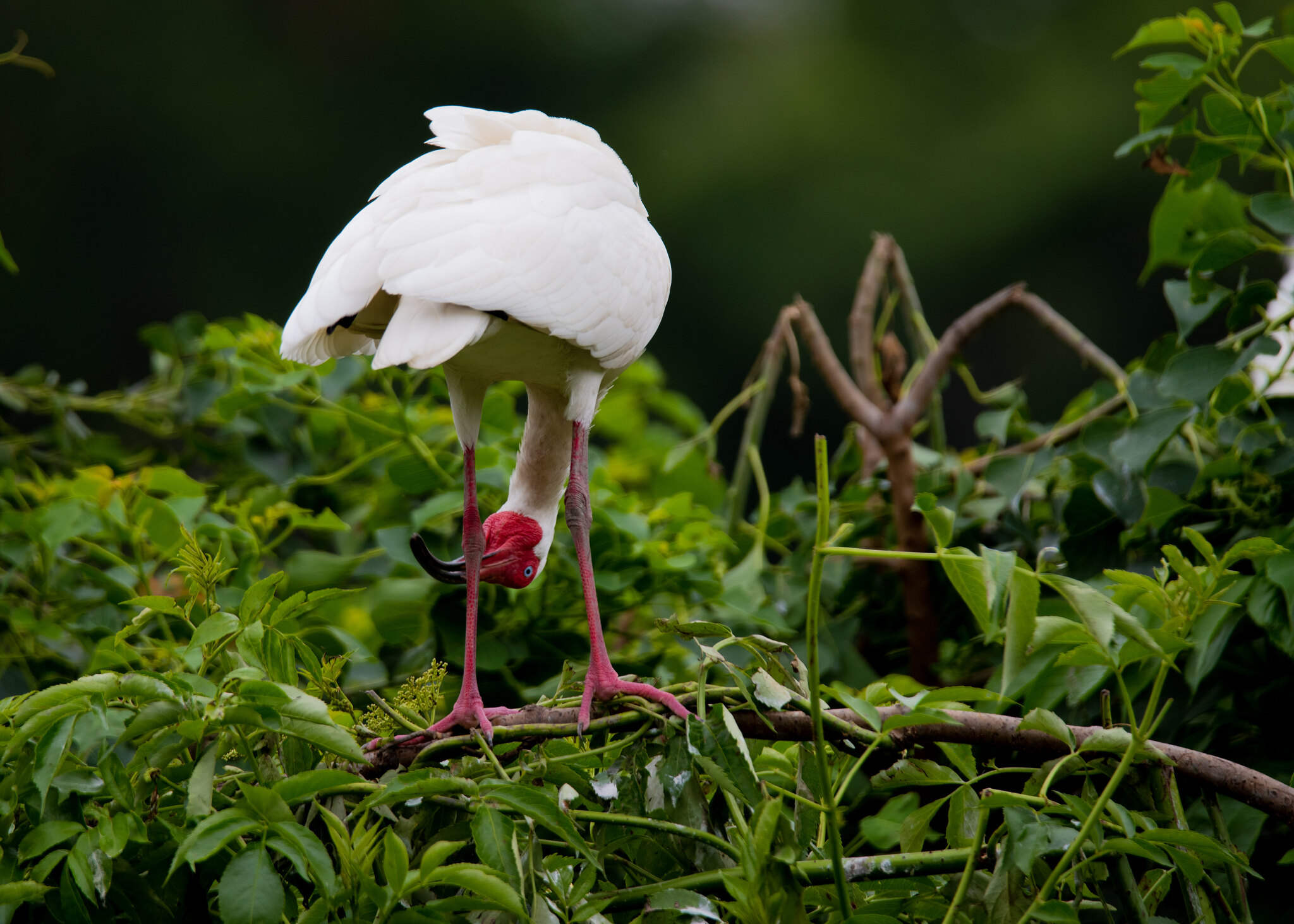
The White Ibis, or Eudocimus albus, is a wading bird frequently seen here in the low country. Adult white ibises are white with a long-curved red bill and bright red legs and a red bare patch around their eye and bill. As for the juveniles, they have patches of white and brown with light pink, legs, face, and bill. These birds are often seen foraging near fresh, brackish, and salt water. They probe for various insects and crustaceans by inserting their long-curved bill into the mud and feeling for prey. Once they feel something, they pinch it like tweezers and pull it from the mud. After they are pulled from the mud, they will often rinse the mud off or if they have captured a crab or crayfish, they will remove the claws and shell. They have also been known to stab or pinch small frogs, fish, lizards, newts, and snails while walking along the water’s edge.

During nesting season, the white ibis will nest in colonies in trees or shrubs and the female will build the nest in the forks of live or dead trees. The male will gather sticks while the female will occasionally gather sticks to build the nest, and after 7 days the nest is fully built and ready to house some eggs! It has also been seen that the white ibis will nest and forage near freshwater due to their chicks being unable to consume large amounts of salt. Both parents are invested in their young and will take turns feeding the chicks. After 7 weeks, the juvenile Ibises can forage and fly on their own and will leave the colony and can often be seen foraging with the adults.

The white ibis is the most prevalent wading bird in the southeast. In recent years, their total range has increased in the U.S, with a northward spread on the Atlantic Coast. Their population has also been steady since 1966 and Partners in Flight has estimated that their global breeding population is 2.4 million and is of low conservation concern. But, like other wading birds they rely on the wetlands and any changes to water levels may affect the white ibises survival and breeding success. The white ibis is a resilient wading bird that can be seen throughout the low country. Summer is usually the best time of year to find these birds, and the Sunset Tour from the downtown Beaufort marina gives a great opportunity to climb onboard our USCG certified vessel, appropriately named Ibis, to see these birds returning to their evening roost in the Cypress Wetlands.
Post by Ally Jo Salomon (Naturalist)
